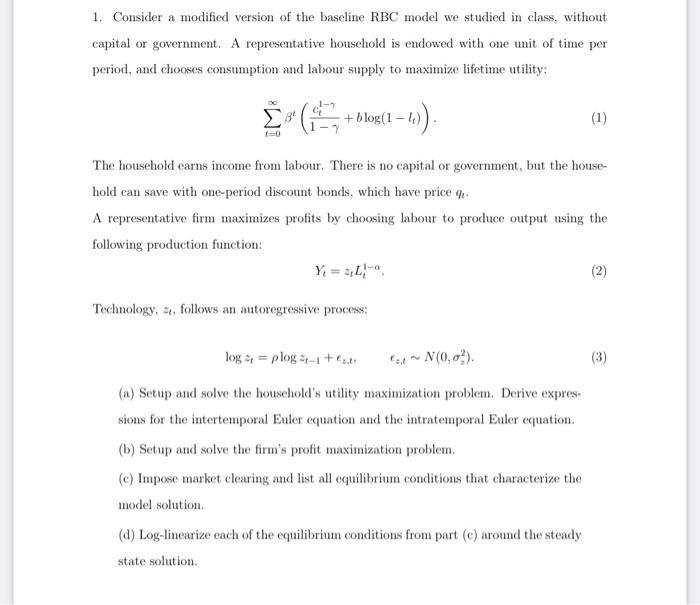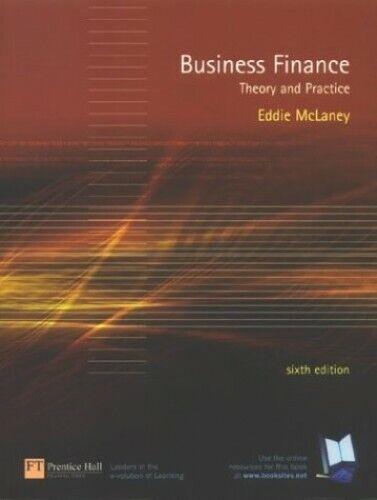1. Consider a modified version of the baseline RBC model we studied in class, without capital or government. A representative household is endowed with one unit of time per period, and chooses consumption and labour supply to maximize lifetime utility: t=0t(1ct1+blog(1lt)). The household earns income from labour. There is no capital or government, but the household can save with one-period discount bonds, which have price qt. A representative firm maximizes profits by choosing labour to produce output using the following production function: Yt=ztLt1a. Technology, zt, follows an autoregressive process: logzt=logzt1+s,t,s,tN(0,s2). (a) Setup and solve the household's utility maximization problem. Derive expressions for the intertemporal Euler equation and the intratemporal Euler equation. (b) Setup and solve the firm's profit maximization problem. (c) Impose market clearing and list all equilibrium conditions that characterize the model solution. (d) Log-linearize each of the equilibrium conditions from part (c) around the steady state solution. 1. Consider a modified version of the baseline RBC model we studied in class, without capital or government. A representative household is endowed with one unit of time per period, and chooses consumption and labour supply to maximize lifetime utility: t=0t(1ct1+blog(1lt)). The household earns income from labour. There is no capital or government, but the household can save with one-period discount bonds, which have price qt. A representative firm maximizes profits by choosing labour to produce output using the following production function: Yt=ztLt1a. Technology, zt, follows an autoregressive process: logzt=logzt1+s,t,s,tN(0,s2). (a) Setup and solve the household's utility maximization problem. Derive expressions for the intertemporal Euler equation and the intratemporal Euler equation. (b) Setup and solve the firm's profit maximization problem. (c) Impose market clearing and list all equilibrium conditions that characterize the model solution. (d) Log-linearize each of the equilibrium conditions from part (c) around the steady state solution







